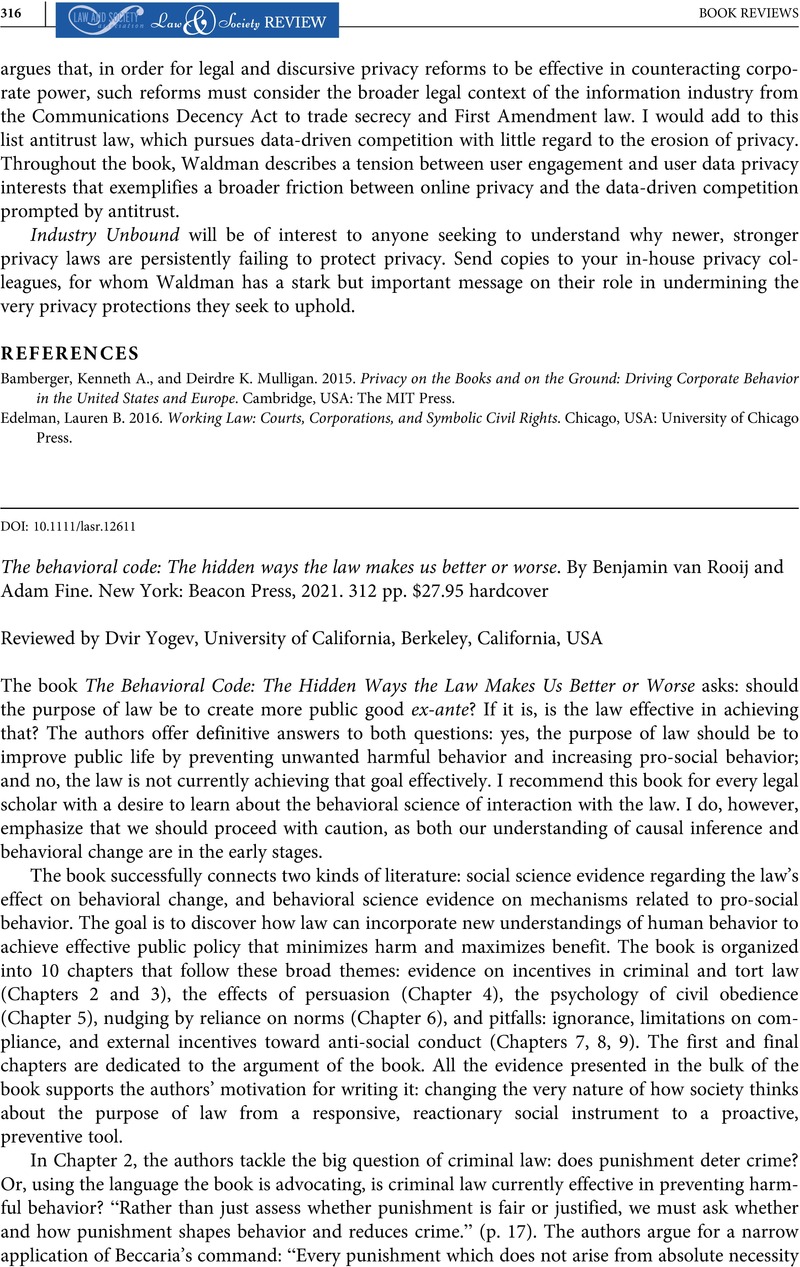No CrossRef data available.
Article contents
The behavioral code: The hidden ways the law makes us better or worse. By Benjamin van Rooij and Adam Fine. New York: Beacon Press, 2021. 312 pp. $27.95 hardcover
Review products
The behavioral code: The hidden ways the law makes us better or worse. By Benjamin van Rooij and Adam Fine. New York: Beacon Press, 2021. 312 pp. $27.95 hardcover
Published online by Cambridge University Press: 01 January 2024
Abstract
An abstract is not available for this content so a preview has been provided. Please use the Get access link above for information on how to access this content.

- Type
- Book Reviews
- Information
- Copyright
- © 2022 Law and Society Association.
References
REFERENCES
Lynch Holly, Fernandez, Greiner D. James, and Cohen I. Glenn. 2020. “Overcoming Obstacles to Experiments in Legal Practice.” Science 367(6482): 1078-80.Google Scholar
McShane, Blakeley B., Gal David, Gelman Andrew, Robert Christian, and Tackett Jennifer L. 2019. “Abandon Statistical Significance.” The American Statistician 73(sup1): 235-45.Google Scholar
Milkman, Katherine L., Gromet Dena, Ho Hung, Kay Joseph S., Lee Timothy W., Pandiloski Pepi, Park Yeji, et al. 2021. “Megastudies Improve the Impact of Applied Behavioural Science.” Nature 600(7889): 478-83.Google Scholar


